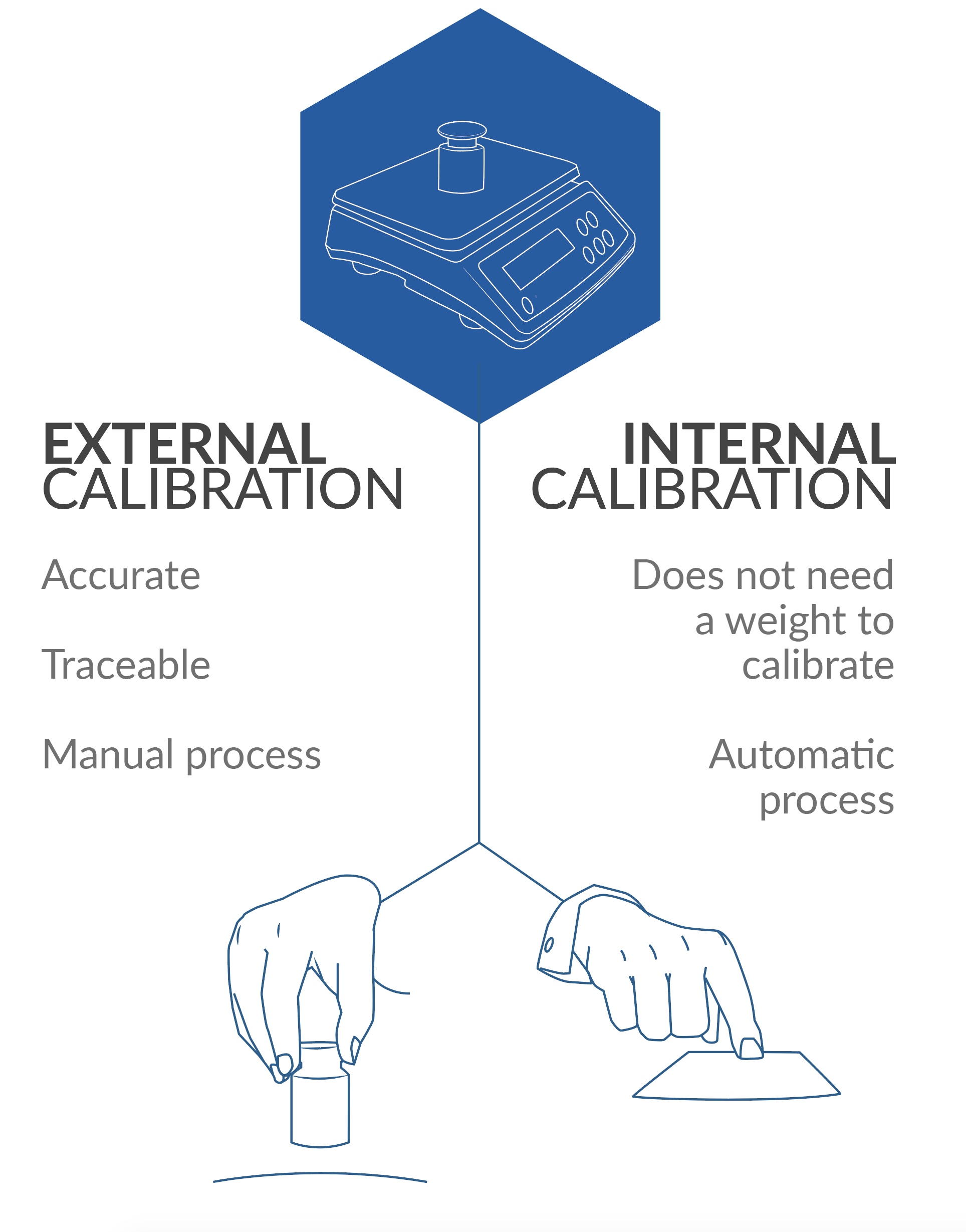No Products in the Cart
Calibration is essential to ensure a weighing scale or balance’s accuracy. Frequent calibration shows the device is linear in its precision, allowing for more experiments with fewer chances of errors. There are two methods to perform a calibration: internal and external calibration.
The process for an internal calibration is simple, you calibrate with a weight inside the balance. It can happen automatically if the balance has a setting for that or if someone presses the cal key. The advantage is that the user does not need a weight to calibrate the balance. Nonetheless, there are those who need to verify the calibration with their certified external mass. They use a set of approved calibration weights for traceability, accuracy and efficient data collection. The internal calibration may refer to an automatic process of calibrating while external calibration uses the manual method.

As for what is the best to use. It comes down to what an user wants or needs. It is handy to have an internal calibration as you can calibrate as often as you want without having to get weights. But for those that need traceability, then external calibration is the way to go.